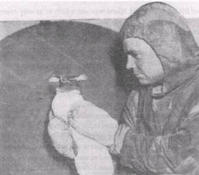


Memories of the Bureau, 1946 to 1962
Foreword
Terminology
Prologue
Preface
Chapter 1: The Warren Years, 1946 to 1950
Warren the Man
Warren Joins the Bureau
Wartime Perceptions and Attitudes
Return to Civvy Street
Frosterley
People in the Bureau
Re-establishing and Reorganising the Bureau
Reorganisation of Central Office
The Position of Chief Scientific Officer
Post-War Reorganisation
The Haldane Story
Public Weather Services
The New South Wales Divisional Office
The Victorian Divisional Office
The Queensland Divisional Office
The South Australian Divisional Office
The Western Australian Divisional Office
The Tasmanian Divisional Office
Pre-war Services for Civil Aviation
Post-War Meteorological Service for Aviation
Indian Ocean Survey Flight
The Aviation Field Staff
Synoptic Analysis, Prognosis and Forecasting
Antarctic and Southern Ocean Meteorology
A Wider Scientific Horizon
Research, Development and Special Investigations
Analysts' Conference, April 1950
Instruments and Observations
Radiosondes
Radar Winds and Radar Weather Watch
Telecommunications
Climate and Statistics
Training
Publications
CSIRO
The Universities
Achievements of the Warren Years
Chapter 2: International Meteorology
Chapter 3: The Timcke Years, 1950 to 1955
Chapter 4: A Year at the Massachusetts Institute of Technology
Chapter 5: The Dwyer Years, 1955 to 1962
Chapter 6: A Springboard for the Future
Appendix 1: References
Appendix 2: Reports, Papers, Manuscripts
Appendix 3: Milestones
Appendix 4: Acknowledgements
Appendix 5: Summary by H. N. Warren of the Operation of the Meteorological Section of Allied Air Headquarters, Brisbane, 1942–45
Endnotes
Index
Search
Help
Contact us

Antarctic and Southern Ocean Meteorology (continued)
The second Bureau member to move into sub-Antarctic waters was George Ainsworth, OIC of a base established by Douglas Mawson on Macquarie Island as a wireless link with Australia during his Australian Antarctic Expedition to Commonwealth Bay and the Shackleton Ice Shelf from 1911 to 1914. When I joined the Bureau in 1939 I met George, a member of the staff of the Sydney Divisional Office. A remarkable man, George at one time was personal secretary to Billy Hughes, a former Australian Prime Minister.The station at Macquarie Island continued until 1916 when another Bureau man, Harold Power, was among those lost when the relief ship Endeavour foundered. A memorial to Harold Power was attached to the wall of the lobby at 2 Drummond Street alongside another paying tribute to staff who had served in World War I. When the Bureau's now Head Office moved to new premises at 150 Lonsdale Street in 1974, those memorials were moved to the fifth floor of the new premises.
The Bureau's Alan Martin and Aub Gotley were appointed OIC when the Macquarie Island station was re-established in 1948 and a new station was built on Heard Island in December 1947.


As Cornish (1996) has pointed out, Alan Martin was a capable and innovative scientist who made a notable contribution to the work of the Instrument Section during the war years, including radiosonde development, manufacture of weather balloons and hydrogen generation. After a difference of opinion with H. N. Warren he volunteered for service with the Australian Army Z Force (Services Reconnaissances Detachment), trained as a Commando at Fraser Island, Queensland, and as a paratrooper at RAAF Station, Richmond, NSW. He was posted to the equatorial island of Morotai where he participated in a number of dangerous missions, landing behind enemy lines from small boats launched from submarines. In April he was a member of a small party of paratroopers parachuted into enemy territory in Borneo. Unfortunately the airdrop resulted in the parachutists landing in a Japanese camp. All other members of the party were captured and shot but Alan's parachute became entangled in an upper story of the tropical rainforest, enabling him to avoid capture. Thinking he was closer to the ground than was the case Alan cut his parachute shrouds and severely injured his back in falling. Narrowly escaping capture, he was cared for by villagers and rescued by Allied forces. Despite a back injury from which he never completely recovered he never complained, subsisting on a diet in which beer was always present.
People in Bright Sparcs - Cornish, Allan William; Mawson, Douglas; Warren, Herbert Norman
 |
Bureau of Meteorology |  |
© Online Edition Australian Science and Technology Heritage Centre and Bureau of Meteorology 2001
Published by Australian Science and Technology Heritage Centre, using the Web Academic Resource Publisher
http://www.austehc.unimelb.edu.au/fam/0906.html